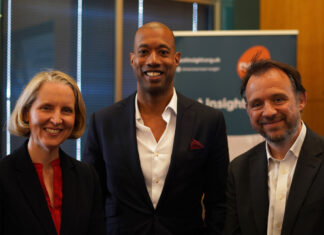Around the world, pension systems have had to reform in response to an ageing society. In the UK, these changes have ranged from the widespread shift from defined benefit to defined contribution pensions to the replacement of stakeholder pensions with mandatory auto-enrolment.
In this new environment, policymakers, trustees and employers face a new challenge: how to ensure that systems designed to address macroeconomic concerns are able to deliver enhanced retirement security at the individual level. It’s a shift from the macroeconomic to the microeconomic, from systemic sustainability to individual financial security, from national policy to “retirement readiness” for each individual member of a pension scheme.
One common response to this challenge is to think first about better decision-making by members, including better disclosure, better education and, importantly, more options. But if behavioral economics has taught us anything, it is that such individual choices take place in an environment, a “choice architecture”, overseen by policymakers, trustees and employers. It is the decisions by the choice architects that, first and foremost, have the largest impact on individual outcomes.
For example, mandatory or automatic contributions raise the fraction of members contributing at a non-zero savings rate, thus reducing or eliminating the number of non-savers in the pension system. So as a first step, the focus for improving member outcomes ought to be on system design elements, such as minimum contribution and eligibility levels. These features dictate the quality of outcome for very many members, particularly those at low and moderate incomes.
In other words, in the pursuit of better member outcomes, the first question is not what members ought to do but on what policymakers, trustees and employees ought to do. Are system defaults designed solely for minimal wealth accumulation by members or are they aggressive in encouraging pension savings and higher levels of wealth?
Once these design parameters are set, only then does the question of outcomes turn to the individual member. A key consideration will be the communication strategies necessary for members to make wise choices in a given pension system.
Digital technology offers both a great opportunity and its own challenge. Opportunity – in the sense that virtually all pension members are connected to the world through their mobile phones. It’s now possible to reach members effortlessly in their daily lives, whether through email, texting, or a mobile app. Challenge – because, as we are all too familiar in our own personal lives, distraction risk is high in the digital world. Pension educators must penetrate a digital fog.
Here, though, behavioural economics also offers help, in the form of other techniques that can help improve communication effectiveness. It might help, for example, to frame retirement as a journey toward a life goal rather than as a current contribution rate or account balance. Pension administrators are comfortable with safeguarding and accounting for pension assets, but are they prepared to be retirement planners and forecasters?
The principle of streamlined choice is important here. Individuals at retirement choosing an income stream should have a simple menu – think Options A, B and C, simply described, rather than a dozen choices about investments, paydown rates and annuity choices. It should be as easy to make pension choices as posting on Facebook. That’s the new standard.
Similarly, digital communications bring greater discipline and measurement to the process of communicating with members. It’s possible to establish quickly what works and what doesn’t. Experiments can be run in real time. Which audiences respond most to a given message? For which audiences does it fall on deaf ears?
This, then, is the new challenge for DC pension systems: not only ensuring a sustainable pension system in the face of an ageing society, but also helping each member attain retirement security. Responsibility for member outcomes rests squarely on the shoulders of the choice architects of the systems – policymakers, trustees, employers, and indeed all other professional partners in the enterprise, including consultants, asset managers and insurers. Only then does it rest on the individual choices made by each member, choices that are increasingly mediated by digital communications, delivered “just in time” as they are needed.
Guest blog by Stephen Utkus, Principal, Vanguard Center for Investor Research
Watch Steve Utkus and Shlomo Benartzi’s keynote from the Nest Insight conference 2017, ‘Helping DC members achieve better outcomes’.
https://www.youtube.com/watch?v=jPw3NvJnb_k&feature=youtu.be
Important information:
This information is directed at professional investors and should not be distributed to, or relied upon by retail investors.
This article is designed for use by, and is directed only at, persons resident in the UK.
The material contained in this document is not to be regarded as an offer to buy or sell or the solicitation of any offer to buy or sell securities in any jurisdiction where such an offer or solicitation is against the law, or to anyone to whom it is unlawful to make such an offer or solicitation, or if the person making the offer or solicitation is not qualified to do so.
The information in this article does not constitute legal, tax, or investment advice. You must not, therefore, rely on the content of this article when making any investment decisions.
The value of investments, and the income from them, may fall or rise and investors may get back less than they invested. Past performance is not a reliable indicator of future results.
The opinions expressed in this article are those of individual author and may not be representative of Vanguard Asset Management, Limited.
Issued by Vanguard Asset Management, Limited which is authorised and regulated in the UK by the Financial Conduct Authority.
© Vanguard Asset Management 2018
VAM – 439554






